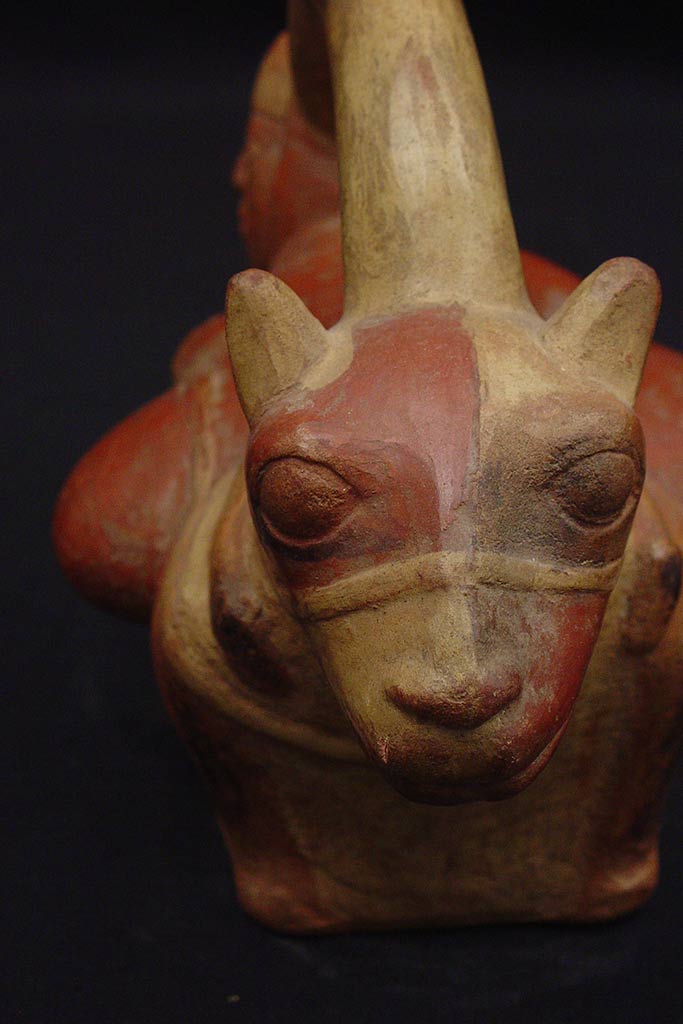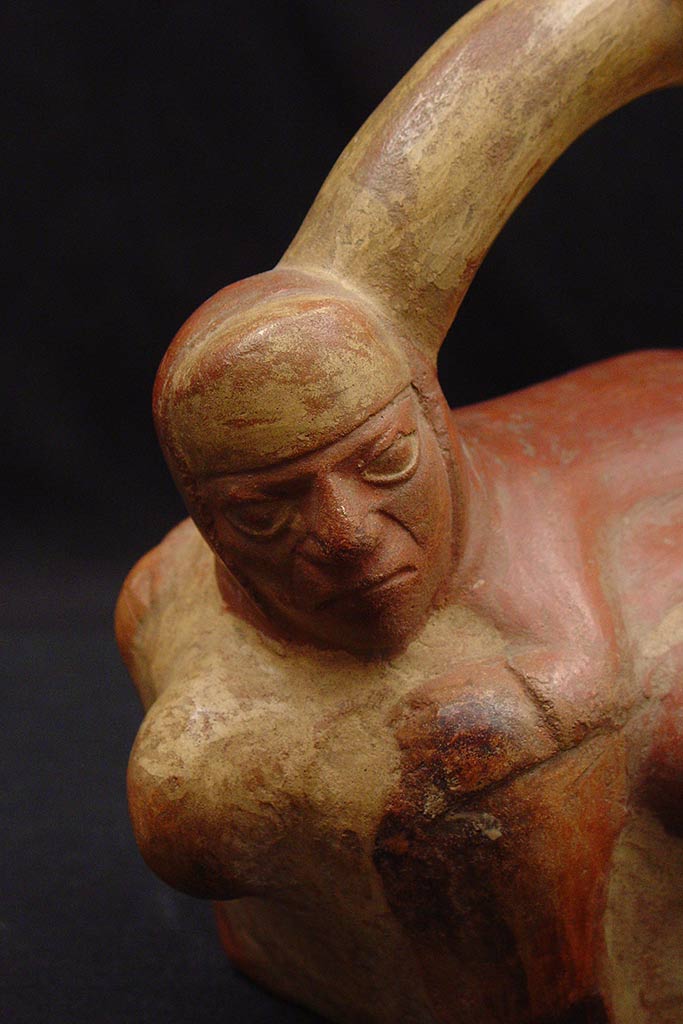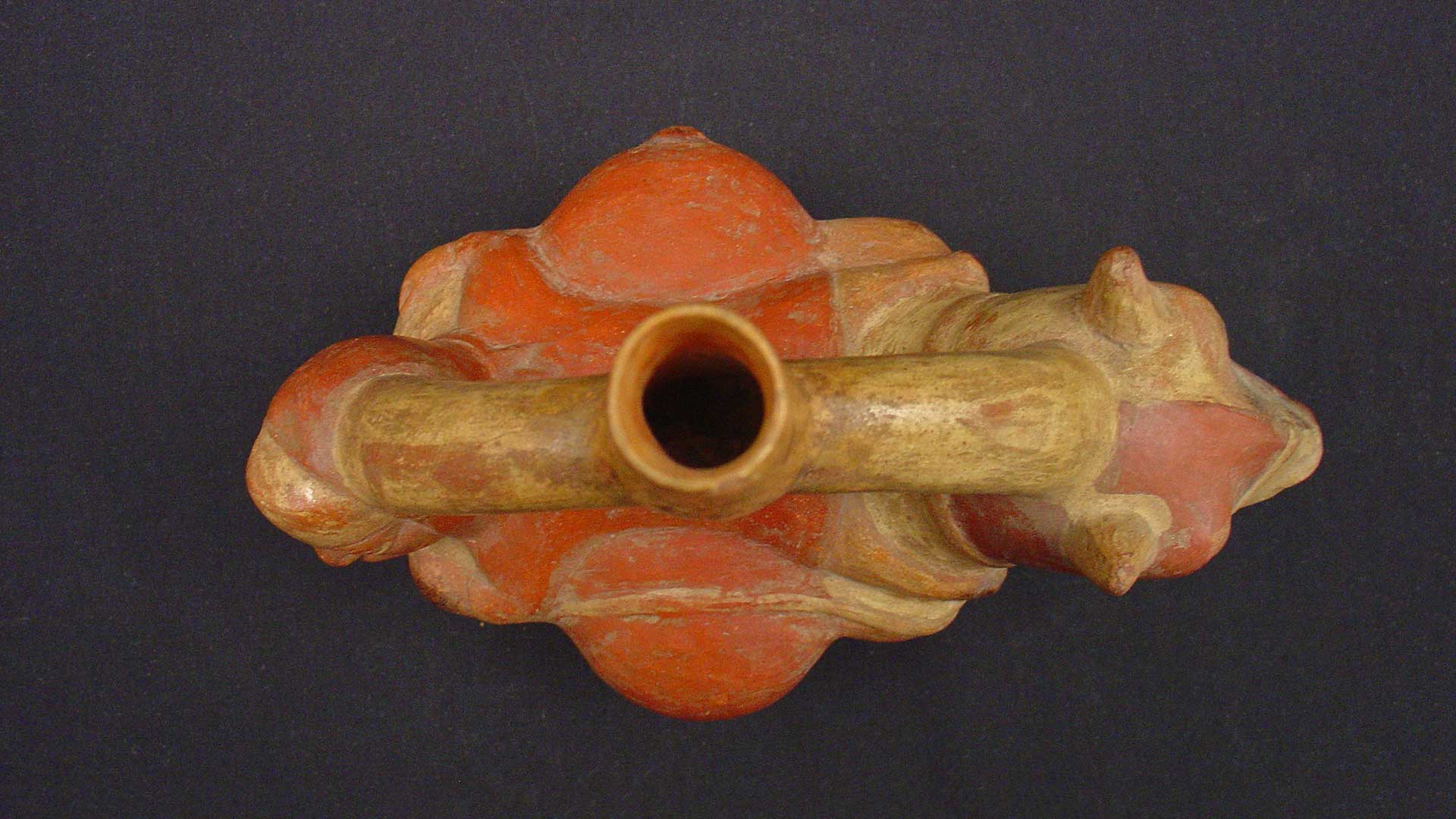
Featured Object: Moche Spouted Vase
- Post Date: 8/12/2017
- Author: Jamie Luensman
- Reading Time: 2 minute read
This spouted vessel is a product of the ancient Moche peoples of Peru, dating from around the sixth century CE. The Moche, or Mochica, was an indigenous culture that flourished between 100 CE and 800 CE. The Moche primarily occupied the north coast of Peru. The Moche peoples were mostly farmers and had a sophisticated culture but did not have a written language.
Religious iconography and domestic imagery were prevalent subjects in Moche pottery, painting, sculpture, and weaving. In this Moche spouted vase, the subject is a man, probably a farmer, and a llama, a common domestic animal in the Central Andes. As is demonstrated in this vessel, much Moche pottery depicts scenes and objects from everyday life: hunting, farming, fishing, squash, peanuts, and potatoes. These types of ceramics have typically been found as valued goods in burials.
The spouted vase is a highly recognizable style of Moche pottery, which served functional and iconographic purposes within the ancient society. Moche pottery styles are organized into five phases. This particular vessel was likely produced during the Moche IV phase, based on the style as a whole, as well as the form of the stirrup spout. Moche IV pottery was more refined than earlier types, as technology of pottery making advanced. This piece, like most Moche IV pottery, was probably made from a mold, fired in a kiln, and then painted. The yellow and red colors were used almost exclusively in funerary wares for elite individuals, so the colors of this piece indicate the high status of the individual buried with the pottery. Before it was placed in a burial, this type of vessel was used to store and serve liquids such as chicha, a corn beer common in Moche ceremonies and still produced in Peru today.
The article was originally published on 1/4/2008, but is republished here with expanded photography.
-
- Share:
- Subscribe to Newletter
- Giving


